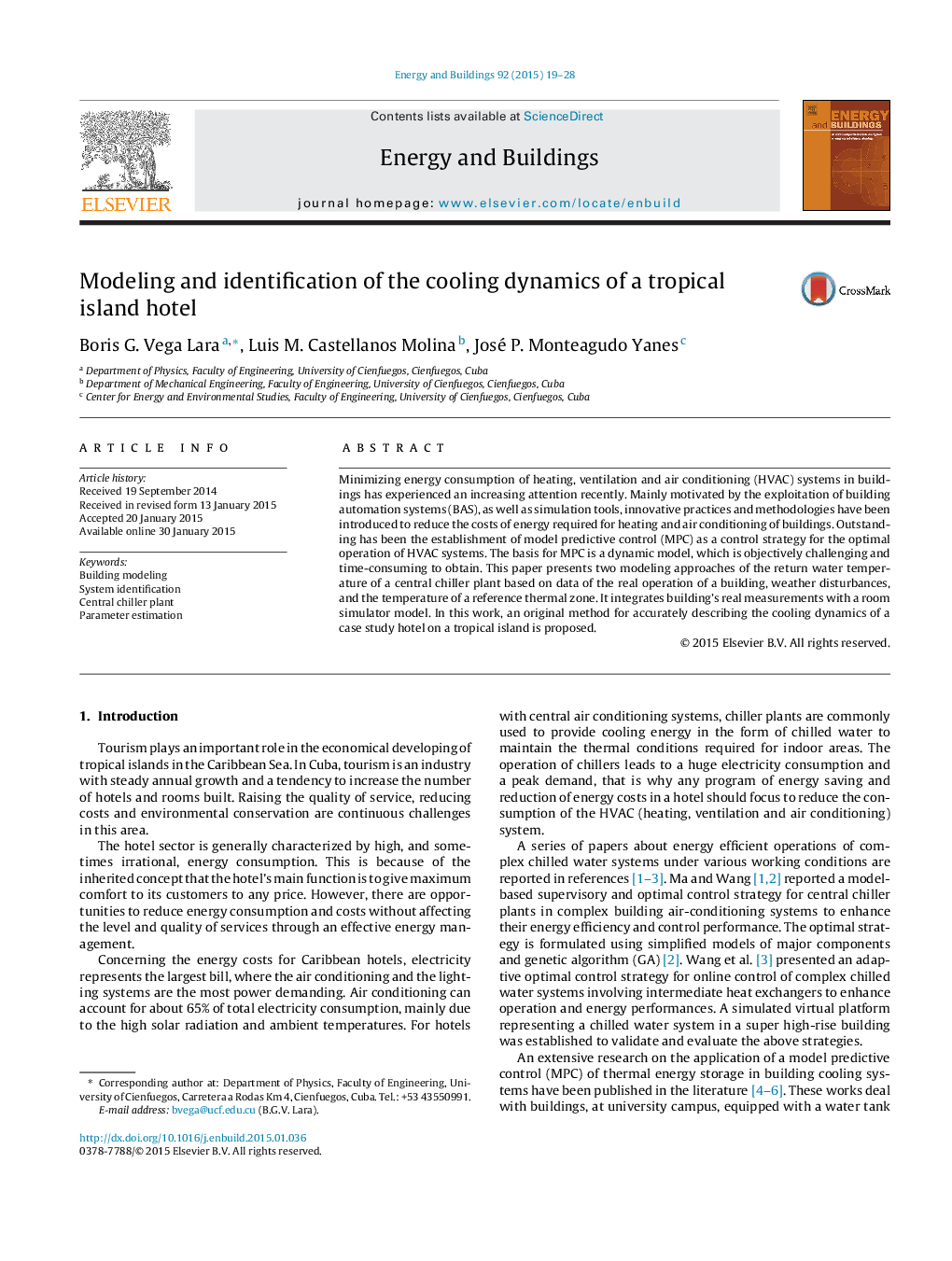| Article ID | Journal | Published Year | Pages | File Type |
|---|---|---|---|---|
| 6732010 | Energy and Buildings | 2015 | 10 Pages |
Abstract
Minimizing energy consumption of heating, ventilation and air conditioning (HVAC) systems in buildings has experienced an increasing attention recently. Mainly motivated by the exploitation of building automation systems (BAS), as well as simulation tools, innovative practices and methodologies have been introduced to reduce the costs of energy required for heating and air conditioning of buildings. Outstanding has been the establishment of model predictive control (MPC) as a control strategy for the optimal operation of HVAC systems. The basis for MPC is a dynamic model, which is objectively challenging and time-consuming to obtain. This paper presents two modeling approaches of the return water temperature of a central chiller plant based on data of the real operation of a building, weather disturbances, and the temperature of a reference thermal zone. It integrates building's real measurements with a room simulator model. In this work, an original method for accurately describing the cooling dynamics of a case study hotel on a tropical island is proposed.
Related Topics
Physical Sciences and Engineering
Energy
Renewable Energy, Sustainability and the Environment
Authors
Boris G. Vega Lara, Luis M. Castellanos Molina, José P. Monteagudo Yanes,
